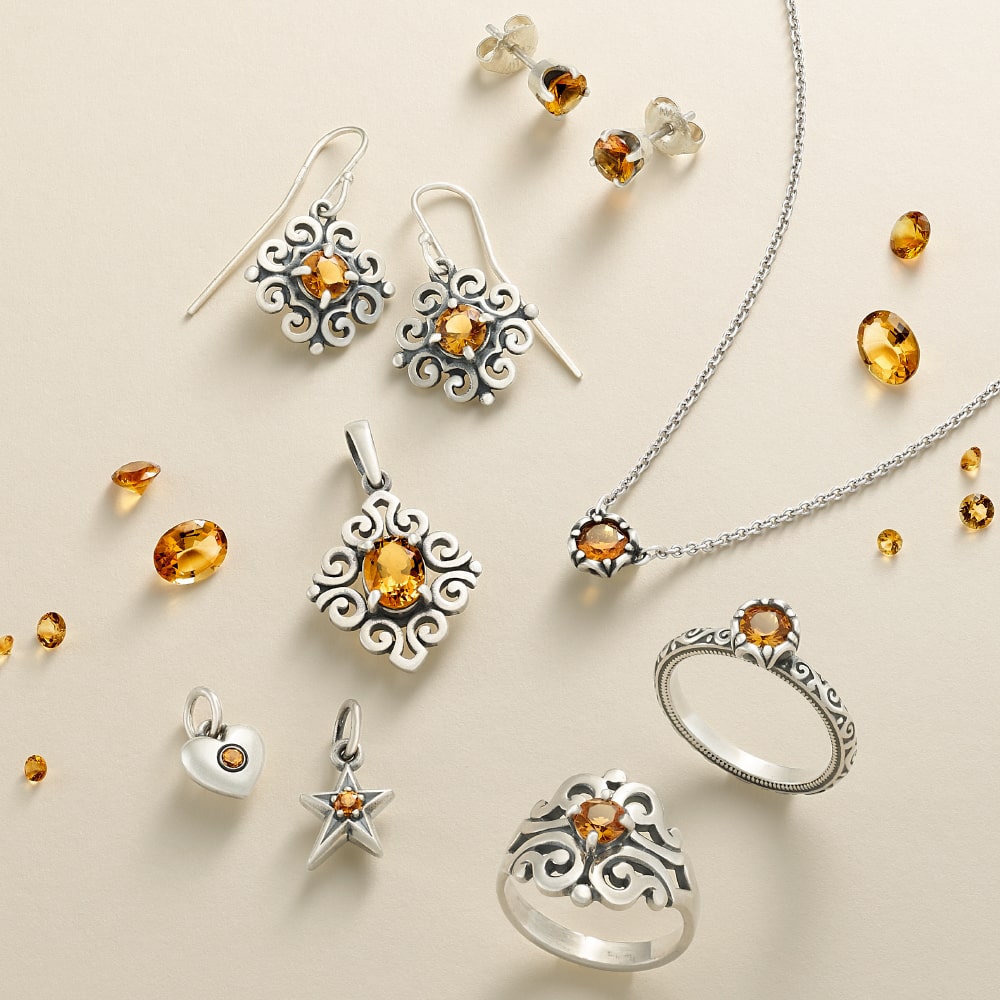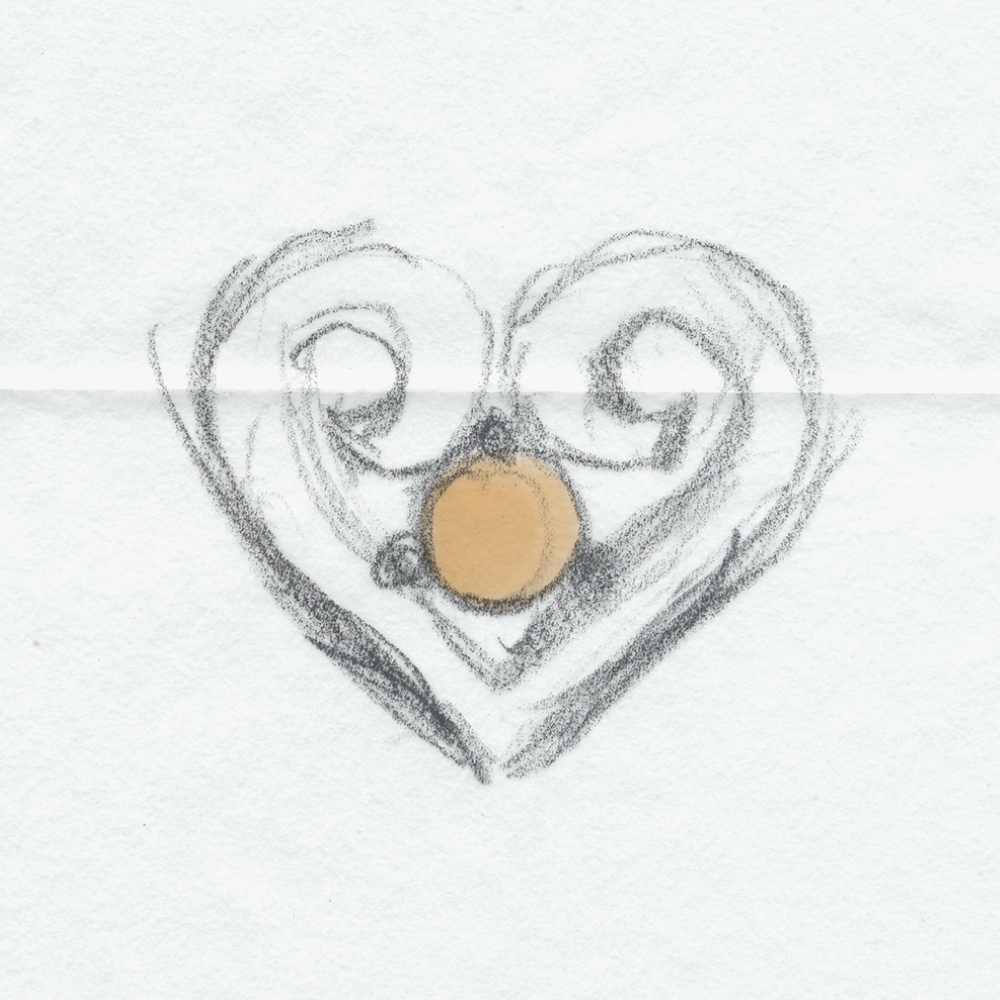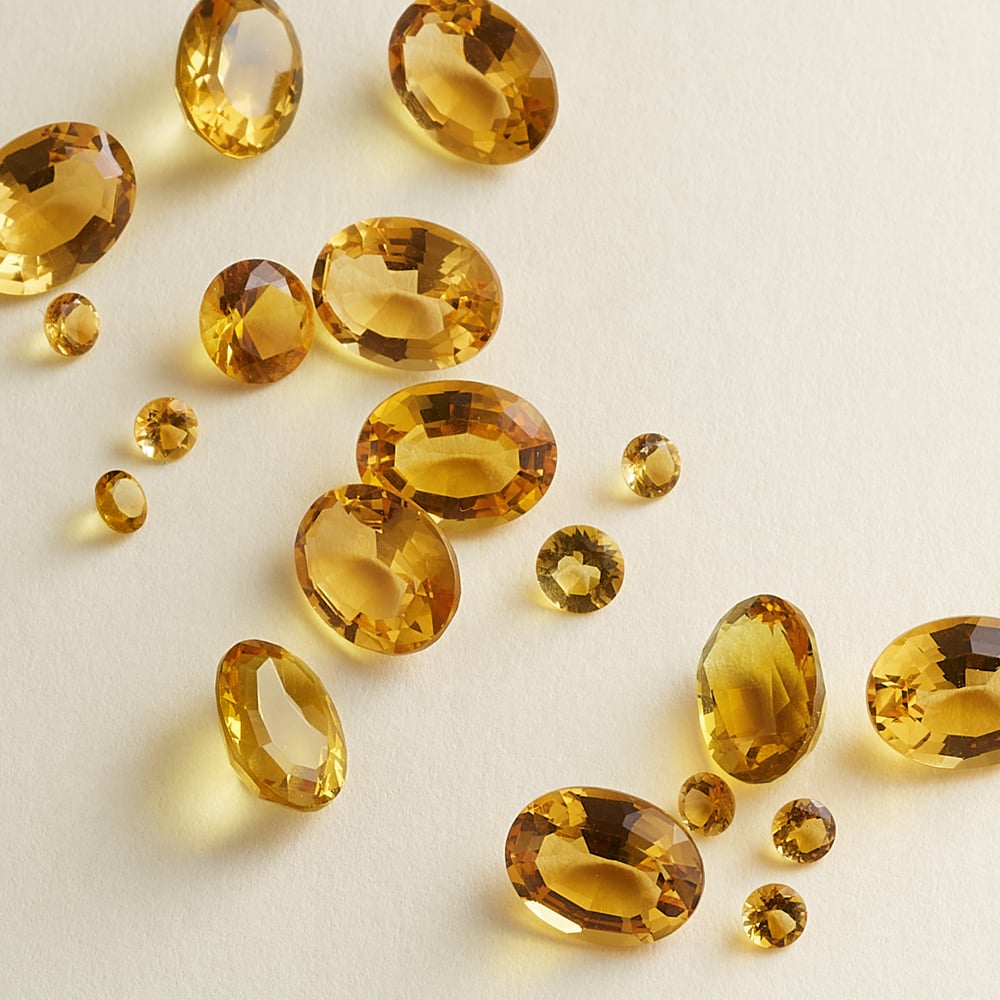November Birthstone

November, the month of golden leaves and crisp autumn air, holds the honor of having not just one but two vibrant birthstones: citrine and yellow topaz. Known for their calming energies and radiant hues reminiscent of the fall season, these November birthstones hold a special place in the world of gemstones.
In this guide, we’re taking a closer look at these unique gemstones, exploring their histories, meanings, and significance.
What is the November Birthstone?
 The birthstones for November are citrine and yellow topaz. These warm-colored gems are the perfect embodiment of the November spirit – filled with the hues of autumn and carrying a certain comforting energy, just like the month itself.
The birthstones for November are citrine and yellow topaz. These warm-colored gems are the perfect embodiment of the November spirit – filled with the hues of autumn and carrying a certain comforting energy, just like the month itself.
What Color is the November Birthstone?
Both citrine and yellow topaz come in various colors, from pale yellow to deep honey-brown. These golden shades echo the shades of the fall season and are often described as capturing the sun’s warmth.
Citrine: November’s Birthstone
Recognized for its many captivating shades of yellow and orange, citrine is a variety of quartz. It owes its color to traces of iron in its composition. With its radiant hue and luminous shine, citrine makes for gorgeous jewelry.
Citrine Birthstone Meaning & History
Throughout history, citrine has been celebrated for its beauty and profound meanings. Its sunny color has led many cultures to associate it with light and positivity.
What is the Meaning of Citrine?
Citrine is known as the “healing quartz.” It’s thought to support vitality and health while encouraging and guiding hope, energy, and warmth within the wearer. It’s also considered a stone of abundance and manifestation, attracting wealth and prosperity, success, and all good things.
What Does Citrine Symbolize?
As a physical manifestation of sunlight, citrine symbolizes light, warmth, and clarity. It’s often associated with creativity and imagination is believed to enhance mental clarity and activate the mind.
History of Citrine
 Citrine has a rich and colorful history that spans many cultures and millennia. The gemstone’s name is derived from the French word “citron,” meaning “lemon,” a nod to its bright, citrus-like color. This gemstone’s sunny hues and eye-catching radiance have made it a cherished gem throughout history.
Citrine has a rich and colorful history that spans many cultures and millennia. The gemstone’s name is derived from the French word “citron,” meaning “lemon,” a nod to its bright, citrus-like color. This gemstone’s sunny hues and eye-catching radiance have made it a cherished gem throughout history.
In ancient times, citrine was carried as a protection against snake venom and evil thoughts. Known as a “merchant’s stone,” citrine was reputed to bring prosperity and success, especially for those in sales and business. This connection to wealth and success made it a popular gemstone amongst Greek merchants during the Hellenistic Age around the end of the 4th century BC.
The Romans were known to craft beautiful jewelry using citrine, fashioning it into highly polished, unfaceted gems called “cabochon.” Citrine’s hardness made it an ideal gemstone for intaglios and cameos, artistic carving styles that were popular in ancient Rome.
In the Art Deco era between World War I and II, citrine saw a resurgence in popularity. Hollywood stars and common people alike admired it for its beauty and affordability. Large, bold pieces featuring citrine were especially popular. During this time, it was common to see the gem set in many substantial jewelry pieces, including cocktail rings, brooches, necklaces, and bracelets.
Today, citrine is still valued for its beauty and symbolism. Its affordability and availability in a variety of sizes and shapes make it a popular choice for all types of jewelry. With a long history spanning across continents and cultures, citrine carries with it a weight of tradition, making it a meaningful gemstone to own.
Where Does Citrine Come From?
While citrine deposits are found worldwide, Brazil is the primary source of this November birthstone. It can also be found in Russia, Madagascar, and Spain, among other locations.
Is Citrine Durable?
Citrine registers a seven on the Mohs hardness scale, indicating good durability and making it an excellent choice for various jewelry types, including rings worn daily.
Citrine Birthstone Care & Cleaning
Citrine is best cleaned with warm, soapy water. As with all gemstones, it should be protected from sharp blows and sudden temperature changes.
Yellow Topaz: November’s Other Birthstone
Yellow topaz, the other November birthstone, shares the month with citrine. This gem, known for its hardness and clarity, comes in various colors, but the golden-yellow variant is most associated with November.
Topaz Birthstone Meaning & History
Topaz has been known and valued for centuries. It was believed to assure beauty, intelligence, and long life in ancient civilizations.
What is the Meaning of Yellow Topaz?
Yellow topaz signifies love and affection. It is believed to give strength and intelligence to the person who wears it, thereby boosting their self-confidence.
History of Topaz
Cultural significance, mystery, and lore are woven through the fascinating history of the topaz gemstone. The name “topaz” is believed to have originated from the ancient Sanskrit word “tapas,” meaning “fire,” likely due to the fiery orange color of many of the gem’s varieties. Alternatively, some believe the name was derived from the Greek name for St. John’s Island in the Red Sea, Topazios, once a significant source of this gemstone.
Topaz was highly revered by the ancient Egyptians and Romans. The Egyptians believed the golden glow of the gem was a reflection of the sun god, Ra, attributing it with the power to protect and heal. Roman scholar Pliny the Elder described topaz in his natural history encyclopedia, suggesting that it was a highly valued gemstone in Rome.
In the Middle Ages, topaz was believed to strengthen the mind, prevent mental disorders, and increase wisdom. It was often used in crowns and rings worn by royalty, leaders, and clergy, believed to provide protection and clarity of thought.
Perhaps the most famous topaz is a colorless, clear one that initially was thought to be a diamond. It is known as the Braganza and was set into the Portuguese Crown. The mistake was discovered in the mid-19th century when the gem’s true identity was revealed.
In the 18th and 19th centuries, topaz was often used in mourning jewelry, crafted to commemorate lost loved ones. During the Victorian era, the gem was regularly featured in jewelry designs, often set in decorative hair combs or pins. Then, in the 20th century, a new variety of topaz was discovered in Russia. The stone, now known as Imperial Topaz, is a radiant orange hue with pink undertones. It was named in honor of the Russian tsar, and ownership of it was initially restricted to the royal family.
Today, topaz continues to be a highly sought-after gemstone. Its impressive variety of colors, combined with its rich history and symbolism, makes it a unique and desirable choice for modern jewelry. As we incorporate topaz into our everyday wear, we carry with us the echoes of its vibrant history, enhancing the personal meaning it holds.
Where Does Topaz Come From?
Topaz can be found throughout the world, including in Brazil, Pakistan, and the United States. Topaz crystals occur in highly acidic igneous rocks and in pegmatite veins and cavities.
Topaz Birthstone Care & Cleaning
Topaz is generally durable and requires no special care. However, it should not be cleaned in a home ultrasonic cleaner. Topaz is best cleaned with warm soapy water and a soft brush.
Citrine vs. Yellow Topaz: Understanding the Difference
Citrine and yellow topaz, though similar in their sunny hue, have distinctive characteristics that set them apart:
Citrine is a type of quartz and gets its warm color from iron impurities, while topaz is a silicate mineral with colors coming from impurities or defects in its structure.
Citrine is primarily found in Brazil, Madagascar, and the U.S., while topaz has broader global deposits, including Brazil, Pakistan, Russia, and the U.S.
Topaz scores an eight on the Mohs scale, indicating higher hardness, but can chip due to its perfect cleavage. Citrine scores a 7, is tough and is resistant to everyday wear and tear.
Citrine symbolizes prosperity and positivity, while yellow topaz stands for balance, tension release, and honesty.
Both should be cleaned gently with mild soap and warm water. Special care should be taken with Topaz due to its propensity to chip.
Though they share a similar visual appeal, these November birthstones have unique characteristics, histories, and properties that make each of them remarkable in their own right. The choice between the two depends on aesthetics, durability, symbolic meaning, and care considerations.
Things to Consider When Buying November Birthstones
When purchasing November birthstones, several key factors should be considered to ensure you make a choice that aligns with your style, needs, and lifestyle:
Citrine and yellow topaz exhibit similar warm, yellow hues. However, the shade can vary greatly from light yellow to a deep, almost brown color. The choice depends on your personal color preference.
Both citrine and topaz can be found in a variety of cuts. Consider which shapes and faceting styles you find most appealing.
These gemstones come in a variety of sizes. Larger citrines are relatively common, while large topaz gems are rarer and thus may come at a higher price.
Generally, both citrine and topaz have excellent clarity with few inclusions. However, always check the clarity grade before purchasing.
While both gemstones are quite durable, topaz is harder but can chip due to its perfect cleavage. Citrine is slightly less hard but is resistant to everyday wear.
Both stones carry different symbolic meanings. Citrine is associated with prosperity and positivity, while yellow topaz is linked with balance and honesty. Choose the stone that resonates with you or the recipient of the gift.
While citrine and topaz require similar care, topaz must be protected from hard knocks due to its cleavage.
Consider the type of jewelry setting that best suits your lifestyle and style preferences. Some settings may offer more protection to the stone, which is particularly important for topaz.
Purchasing one or both of these birthstones is a wonderful way to celebrate a November birthday or other special occasions. Considering these factors will help ensure you choose a gemstone you will cherish and enjoy wearing for years.
Shop Citrine Birthstone Jewelry at James Avery Artisan Jewelry
The tradition of associating specific gemstones with particular months dates back to ancient times. Believed to hold certain powers and qualities, birthstones are more than just beautiful pieces of the Earth; they represent a person’s birth month and are thought to bring good fortune, health, and prosperity to the wearer. For those born in November, citrine and yellow topaz are the remarkable gemstones that symbolize their birth month.
From engagement rings and necklaces to earrings and bracelets, citrine and yellow topaz make stunning pieces of jewelry. Whether set in gold to enhance their warm hues or paired with contrasting colors for a striking look, these November birthstones are a fantastic choice for anyone seeking a piece of jewelry that can be treasured for a lifetime.
Discover the beauty of these and other gemstones at James Avery Artisan Jewelry, your trusted source for beautifully crafted, meaningful pieces that are designed to last a lifetime. We have a wide selection of November citrine birthstone and topaz birthstone jewelry that embodies the warmth and vibrancy of this stunning gem.
Explore our full collection of citrine gemstone jewelry today.